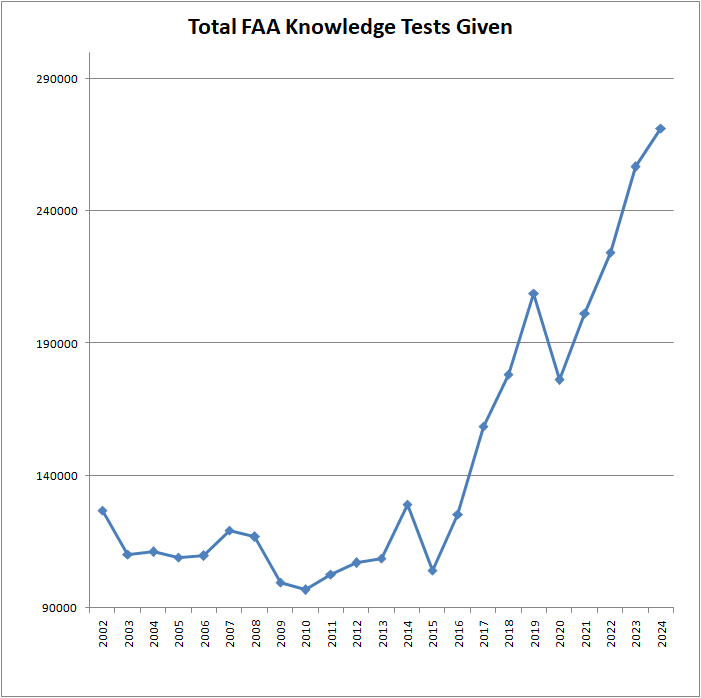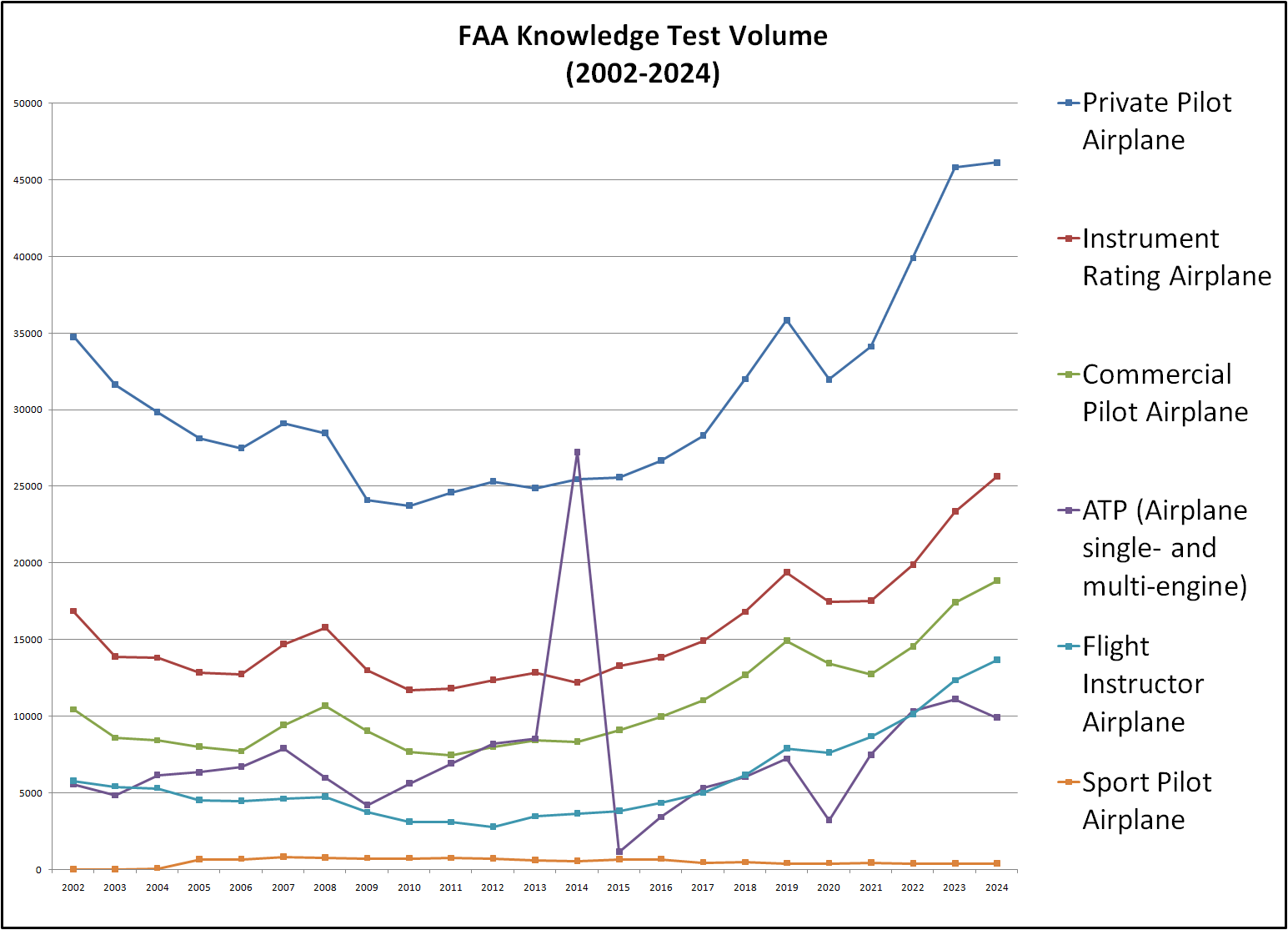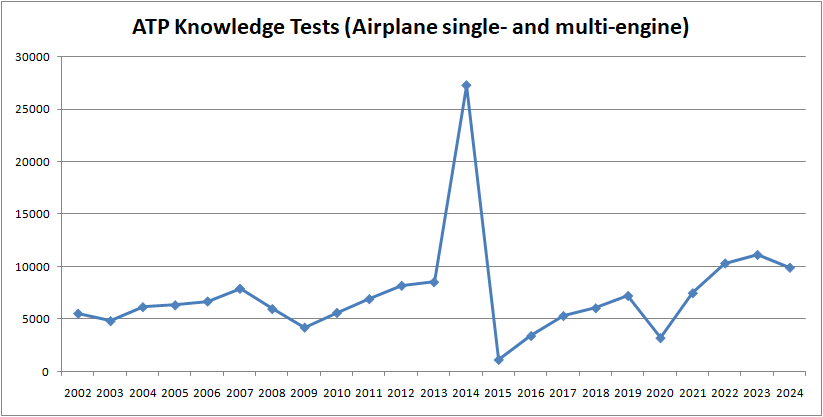For the second year in a row, overall pass rates for airman certification saw a drop. In 2020 and 2021 we saw an overall pass rate on all original issuance airman certification events nearing the 81% rate, but last year and this year we saw drops of overall pass rates. You can see this in the following chart: 
But let’s dig deeper into some of the primary certification events that related to main certificates and ratings in the career pilot training path.
If we look specifically at the pass rates for initial private pilot airplane, commercial pilot airplane, and initial CFI airplane, and initial ATP airplane certification events, the good news is only found in the ATP numbers. Each of these specific certificates saw decreases in pass rates again in 2024 compared to the previous year, and overall downward trends slightly each year over the past few years.
You can see this in this next chart:
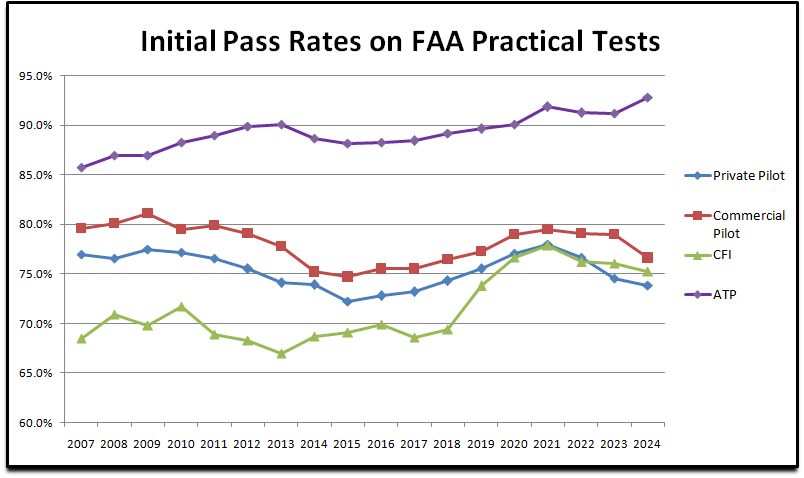
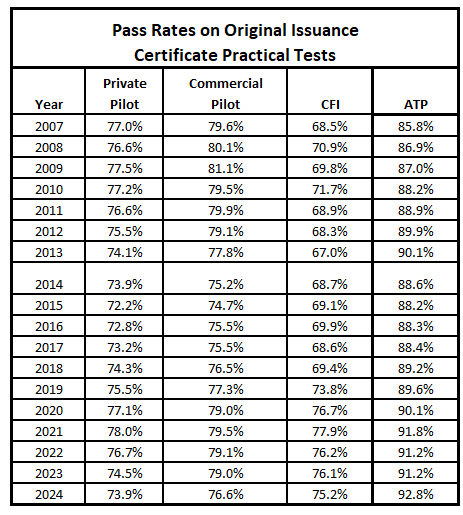
Both of these charts give us some visual representation of the data from the table to the right where these graphs come from, which is from the yearly airman certification data the FAA publishes and compiled into percentage for demonstration of the trends here.
These are not good trends. While we saw somewhat upward trending in pass rates from roughly 2014 through 2021, it appears the gains made over that time are beginning to erode and trend downward.
When trended over the long term (as you can see in the charts at the bottom of this post, the initial private pilot and commercial pilot certification events are actually trending downward over a longer period of time.
Why is this? And why have we seen an up and down happening?
Well, I am speculating a little bit here, but it certainly seems that dips in pass rates correlate closely with the recent heavy hiring of CFIs from the training environment into service as professional pilots in places like airlines, cargo carriers, etc. As we pilfer our CFI cadre, we are left with CFIs who are lessor experienced. One can easily see the connection between less experienced CFIs and the quality in their students.
Heavy turnover of CFIs in our system appears to be correlative with the quality of provision of training in our system.
I don’t have the exact answer of how to solve this, but it is something we as an aviation industry should be paying attention to and finding a way to stem or turn around. If we are seeing base certification events demonstrating less quality performance, it is an indicator of the skill level of our pilots we are generating for future professional service.

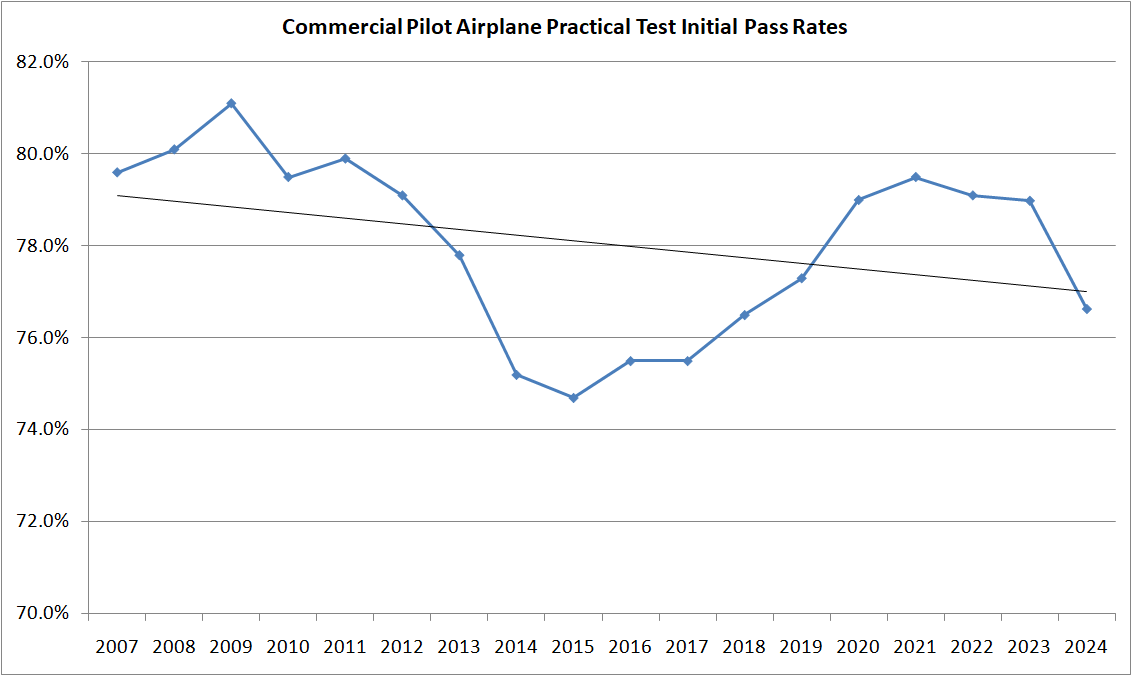

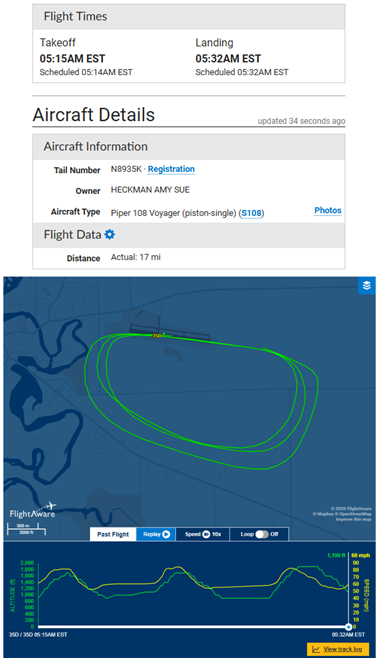 What else would you want to do at 430am and you are wide awake, you might as well go Stinson flying!
What else would you want to do at 430am and you are wide awake, you might as well go Stinson flying!


